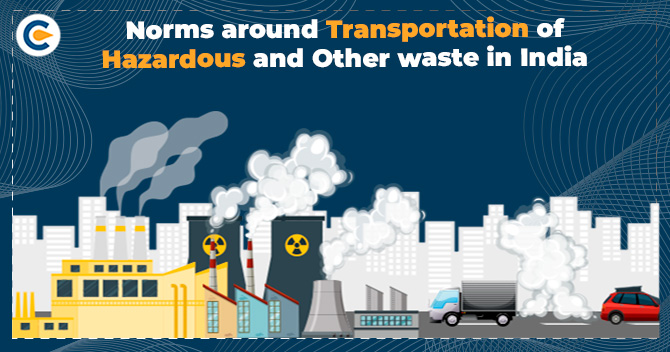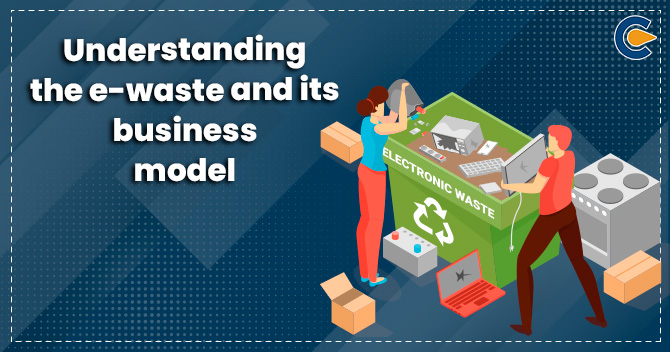Transportation is one of the most crucial areas of concern related to handling Hazardous Waste because the packaging and method of transporting Hazardous Waste will determine the possibility that an accident or spill with occur. Proper and quick identification of a spilled substance will determine how effectively and safely the situation can be controlled. In this article, we will discuss the Transportation of Hazardous waste and other substances.
What is Hazardous Waste?
Hazardous waste is a waste with attributes that make it undesirably dangerous or detrimental to human health and the environment. The nature of hazardous wastes is large and diverse. Hazardous wastes can be found in the form of solids, liquids, and contained gases.
Also, they can be the by-products of production processes, obsolete materials, or discarded unutilized commercial products.
Transportation of Hazardous Waste or Other substances-
Transportation of Hazardous waste means movement of hazardous waste by air, rail, water or road for treatment, storage, and disposal purpose. Spill risk is significantly higher during loading, transportation, & unloading. That is one of the prominent reasons why Hazardous Waste is generally highly regulated.
Hazardous Waste transportation regulations cover the transportation of Hazardous Waste outside of an installation. Every transporter or operator carrying the dangerous waste shall consider the following points-
- Every transport carrying hazardous goods shall show a distinct mark of the class label appropriate to the hazardous waste.
- Every package containing hazardous waste shall display distinct class labels appropriate to the type of hazardous waste.
- If packages contain goods that denote more than one hazard, such packages shall display distinct labels to indicate the hazards.
- Every conveyance carrying goods of hazardous nature shall be fitted with a tachograph and a spark arrester.
On-site Transportation of Hazardous waste typically involves smaller amounts of materials over shorter distances. Also, it poses significant risks from the frequency of the activity and the lack of proper regulation.
Responsibilities for Occupier for Transportation of hazardous and other waste
The occupier in relation to any premises means an individual who has control over the affairs of the premises. Also, he is the person who is overall responsible for handling the hazardous waste and shall ensure that the waste handled should not create any imbalance in the environment. He should also be required to safeguard that the persons working on the site with hazardous waste should be trained and equipped to ensure their safe working. The four main factors of hazardous waste transportation are
- Authorization
- Packaging
- Labeling
- Transportation
Authorization
It is required from the SPCB /pollution control committee for everyone engaged in waste management. It includes-
- processing,
- treatment,
- package,
- transportation,
- collection,
- conversion, sale and use of hazardous waste.
To obtain such authorization from SPCB/PCC, the concerned individual should apply in form 1 of the rules. The hazardous waste shall collect, stored, or reprocessed only in the authorized facility by the SPCB/PCC.
Packaging
The next factor is that the container that handles the hazardous waste should combat the handling & retain integrity for a mini. of six months container requirements for hazardous packaging waste enclosed in Annexure 1. The container should be packed appropriately and sealed during transportation to prevent the spillage of waste.
Labeling
For handling and transportation of hazardous substances, two types of labelling are required-
- Labeling of individual transport containers.
- Labeling of transport vehicles.
Labeling should be marked clearly on the container with particulars of contents of the waste. Labeling of the container shall be provided with a general label as per Form 12 of the Rules. Labeling must be unchangeable, waterproof, and firm to the container and labeled with the words “HAZARDOUS WASTE” in Vernacular language, Hindi / English. Apart from labeling, Emergency contact phone numbers shall be prominently displayed.
Transportation of Hazardous Waste
The following essential factor is the Transportation of Hazardous Waste. It is not only the responsibility of the waste generator to manage the transportation process. It also includes the co-processor, which utilizes the waste, and the transporter, transporting the trash from the generator to the co-processor. The waste generator should ensure that wastes are packaged suitably for safe handling, storage, and transport.
The transportation shall be in accordance with the provisions of the Hazardous Waste (Management, Handling and Transboundary Movement) Rules, 2008, and the rules made by the Central Government under the Motor Vehicle Act, 1988 and other guidelines issued from time to time.
In the transportation of hazardous waste through a State other than the State of origin or destination, the occupier should inform the concerned SPCB before handing over the hazardous waste to the transporter.
Also, the occupier shall provide the transporter with relevant disclosures in Form 11 (i.e. Transport Emergency (TREM) Card) of the Hazardous Waste (Management, Handling and Transboundary Movement) Rules, 2008, regarding the hazardous nature of the wastes & measures to be followed in case of an emergency. Also, the occupier should ensure that the waste is packed and sealed in a manner suitable for handling and transportation.
Responsibilities of the Transporter
The transporter of Hazardous waste shall ensure that-
The vehicle used for transportation shall be in accordance with the provisions under the Motor Vehicle Act, 1988[1], and rules made thereunder.
- He should also require obtaining requisite authorization from SPCB/PCC to transport hazardous waste.
- Transporter shall have the requisite copies of the certificate for transportation of hazardous waste.
- The transporter should have legitimate “Pollution under Control Certificate” (PUCC) during the transportation of hazardous waste and shall be displayed appropriately.
- To facilitate easy identification, the vehicle shall be painted preferably in blue with a white strip of 15 – 30 cm width running centrally all over the vehicle.
- The vehicle should be outfitted with a mechanical handling device as may be required for safe handling & transportation of the wastes.
- The words “HAZARDOUS WASTE” shall be manifested on all sides of the Vehicle in Vernacular Language, Hindi, and English.
- The name of the facility occupier or the transporter shall be displayed as the case may be.
- The vehicle shall be outfitted with roll-on /roll-off covers if the individual containers do not possess the same.
- Carrying passengers is strictly prohibited, and those associated with the waste hauliers shall be permitted only in the cabin.
- Transporter shall carry requisite documents of the manifest for the wastes during transportation as required under Rule 21 of the HW (M, H & TBM) Rules.
- The trucks shall be dedicated to the transportation of hazardous wastes, and they shall not be used for any other purpose.
- Each Vehicle shall carry a first-aid kit, spill control equipment and fire extinguisher.
- Hazardous Waste transport vehicles shall run only at speed specified under the Motor Vehicle Act to avoid any eventuality during the transportation of hazardous waste.
Accident reporting and follow-up
Where an accident occurs at a hazardous waste site or during transportation of the hazardous waste, the occupier of the facility, as the case may be, shall report immediately to the State Pollution Control Board about the accident in Form14.
Liabilities of the person involved in the transportation of hazardous waste. The occupier, importer, transporter, and operator of the facility shall be liable for all damages caused to the environment or third party due to improper handling of the hazardous wastes or disposal of the hazardous wastes.
Conclusion
In a nutshell, Hazardous waste generated at a respective site majorly requires transport to an approved treatment, storage, or disposal facility. As hazardous waste has potential threats to public safety and the environment, that is why government authorities give transportation due attention.
Read our Article:How to Setup Hazardous Waste Recycling Plant in India











